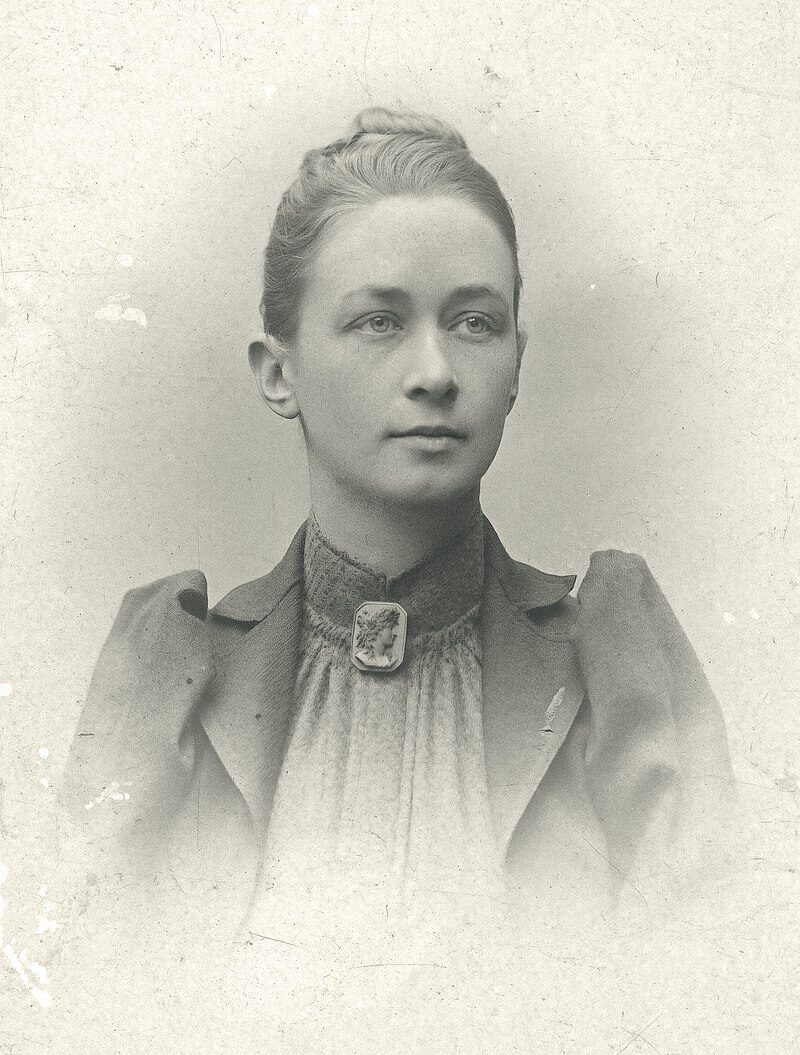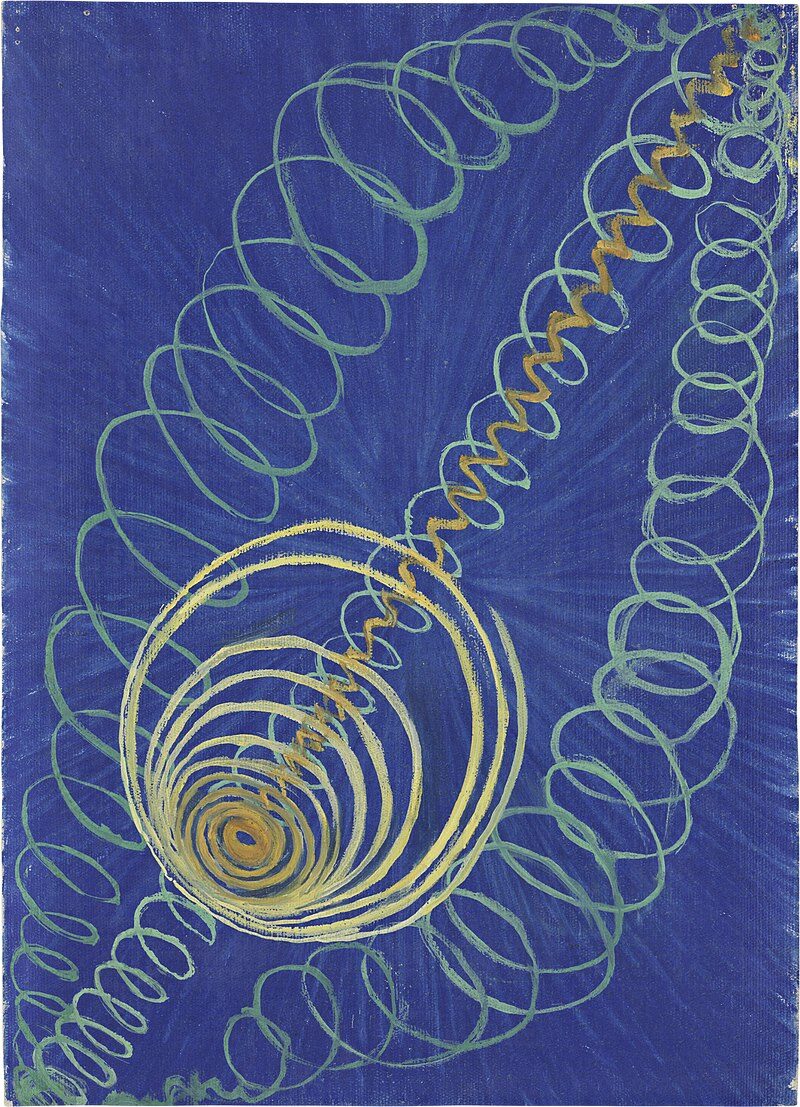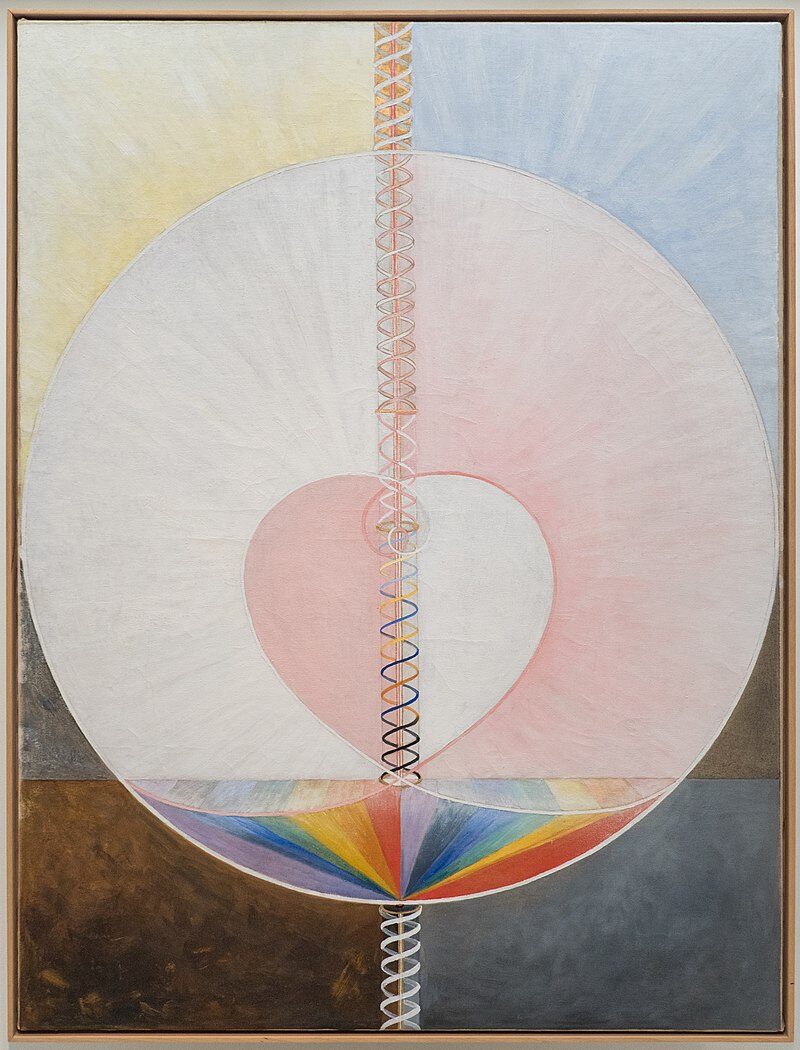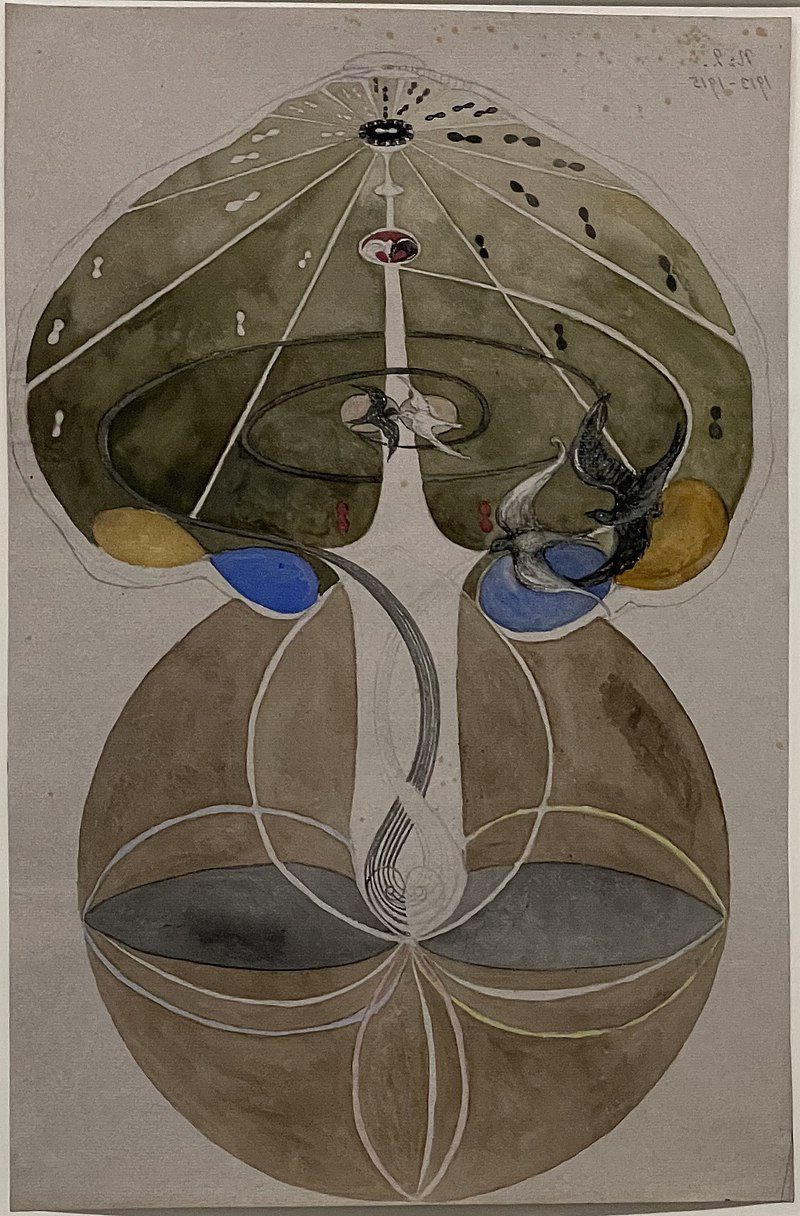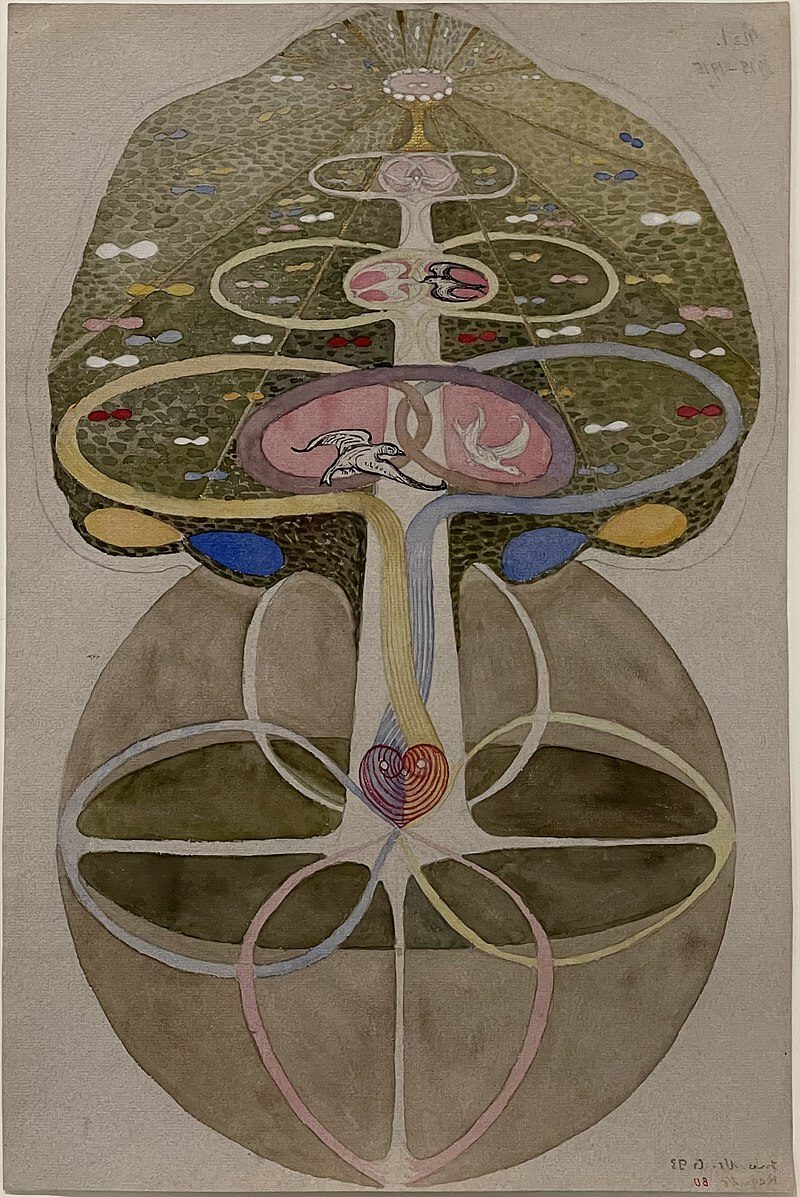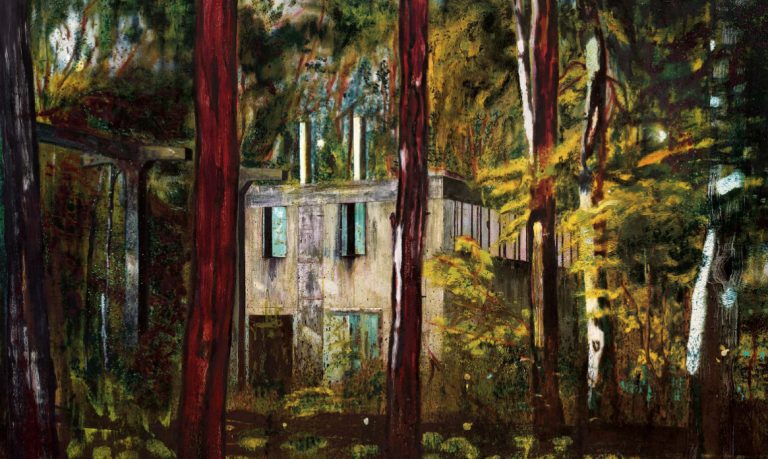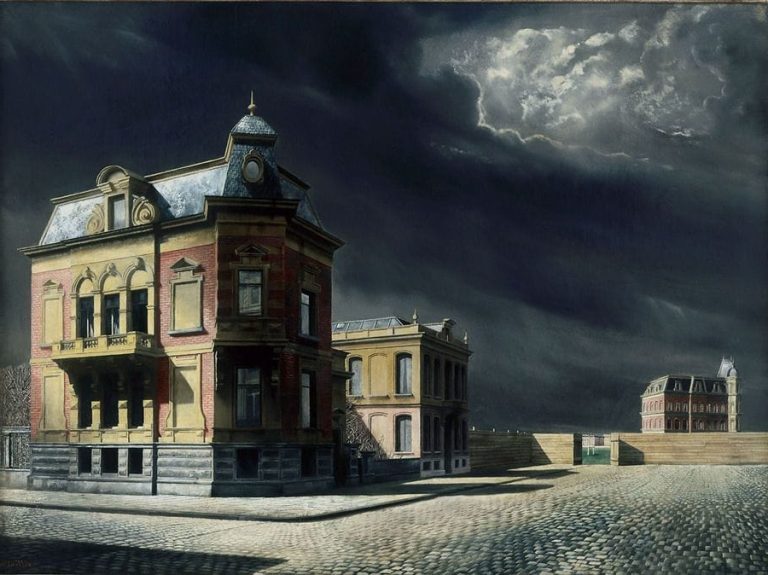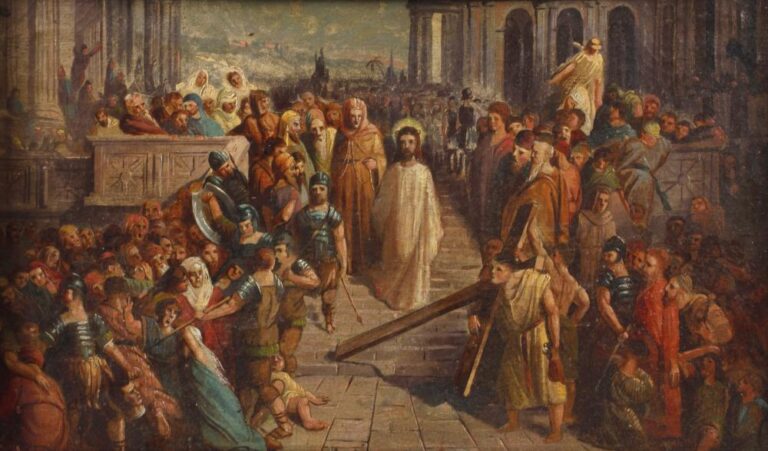Hilma af Klint Artwork: Exploring Symbolic Abstraction
Born: 26 October 1862, Solna, Sweden
Death: 21 October 1944, Danderyd, Sweden
Art Movement: Naturalism, Symbolism, Abstract Art
Nationality: Swedish
Institution: Konstfack University of Arts, Crafts and Design and Royal Academy of Fine Arts
Hilma af Klint Artwork: Exploring Symbolic Abstraction
The Life and Legacy of Hilma af Klint
Hilma af Klint, a pioneer of abstract art from Sweden, created revolutionary paintings that were largely unrecognized during her lifetime. Her work was heavily influenced by spirituality and the occult; she was a significant figure in modern art.
This section explores her early years, her association with spiritual practices, her transition to abstract art, and her posthumous recognition.
Early Years and Artistic Beginnings
Hilma af Klint was born on October 26, 1862, in Stockholm, Sweden. Raised in a family that appreciated art and science, she showed talent from a young age.


She attended the Royal Academy of Fine Arts in Stockholm, where she learned traditional painting techniques.
In her early career, af Klint painted landscapes and portraits. These works demonstrated her strong grasp of form and color. Her interest in the unseen and mystical would later steer her artistic direction.
Association with ‘The Five’ and Spiritual Practices
Af Klint became deeply involved with “The Five,” a group of women sharing a mutual interest in spirituality and the occult. Through regular séances, they believed they communicated with higher spirits, which they referred to as “High Masters.”
These spiritual practices greatly influenced af Klint’s work. She considered her paintings to be guided by these transcendental experiences. Spirituality was a central theme in her art, setting her apart from her contemporaries.
Transition to Abstract Art
The year 1906 marked a turning point for af Klint when she created her first abstract work. This was five years before Wassily Kandinsky, another pioneer of abstract art, created his first abstract composition.


Her abstract paintings were characterized by bold colors, geometric shapes, and symbols influenced by her spiritual practice. These works broke away from the conventional art of her time and laid the groundwork for modern abstract art.
Recognition and Influence
Despite her trailblazing work, af Klint remained largely unknown during her lifetime. Her decision to keep her abstract paintings hidden until 20 years after her death delayed her recognition.
The first major exhibition of her work took place in 1986. Since then, her influence on modern art has been widely acknowledged. Exhibitions across the globe have highlighted her role as a pioneering abstract artist and a remarkable female figure in a male-dominated field. Her legacy continues to inspire new generations of artists.
Exploring the Mystical Themes in af Klint’s Artwork
Hilma af Klint’s art delves into the mystical and unseen, weaving spirituality and philosophy into her abstract works. Her paintings engage with spiritual beliefs and symbols, offering a rich and complex visual language.
Influence of Spiritualism and Theosophy
Hilma af Klint was deeply inspired by spiritualism and theosophy. These movements influenced her innovative approach to art, where she connected with the spiritual world.
She attended seances and sought guidance from spiritual entities, which she believed helped her paint.
Theosophy, founded by figures like Madame Blavatsky, deeply resonated with af Klint. It provided concepts that fueled her artistic vision. She explored ideas about the astral plane and spiritual dimensions, embedding these themes in her work.
Expression of the Spiritual Dimension
Af Klint’s paintings are visual explorations of the spiritual dimension, striving to make the unseen visible. Her series, such as The Paintings for the Temple, represent attempts to connect with higher realms and primordial chaos at the core of existence.
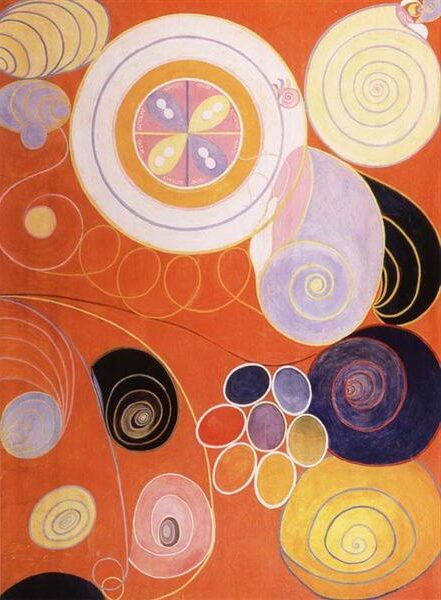

Her abstract art goes beyond mere aesthetics, crafting a narrative rooted in unity and connection. She aimed to capture the essence of spirituality and the messages she felt from mystical sources like Rudolf Steiner and the anthroposophical teachings.
Symbols and Their Meanings
Symbols play a crucial role in af Klint’s artwork. She used them to convey spiritual themes and ideas.
Circles, spirals, and crosses often appear in her paintings, each with specific meanings tied to her beliefs.
The use of symbols was not random; they served as a language to discuss deeper spiritual truths. Through these symbols, af Klint showed her understanding of the complex interactions between the physical and spiritual, harnessing the Mystic elements in her art.
Analysis of Hilma af Klint’s Artistic Techniques
Hilma af Klint’s artwork is renowned for its vibrant use of color, geometric forms, and symbolic connection to nature and science. Her techniques express abstract ideas that were ahead of her time.
Use of Color and Composition
Hilma af Klint’s paintings are famous for their bold use of color. She utilized a wide palette, with colors like red and blue taking center stage.


This use of color was not random; it often held symbolic meaning, representing ideas and emotions.
Her compositions are carefully balanced, creating a sense of harmony. The artist’s abstraction methods show skillful integration of colors and shapes, which guide the viewer’s eyes across the canvas.
This intentional arrangement of elements allows her art to express complex spiritual and philosophical concepts effectively.
Integration of Geometric Forms
Geometric forms are a significant aspect of af Klint’s artistic style. She often incorporated circles, triangles, spirals, and other shapes into her work.
These forms were not merely decorative but carried deep spiritual and philosophical meanings.
She used these shapes to explore ideas about the universe and existence. Her use of geometry in painting enables a structured abstraction, helping to convey her message in a clear yet intriguing manner.
By doing so, af Klint pushed the boundaries of traditional painting, offering a unique abstract visual language.
Connection to Nature and Science
Af Klint’s art frequently connects to nature and science, reflecting her deep interest in these fields.
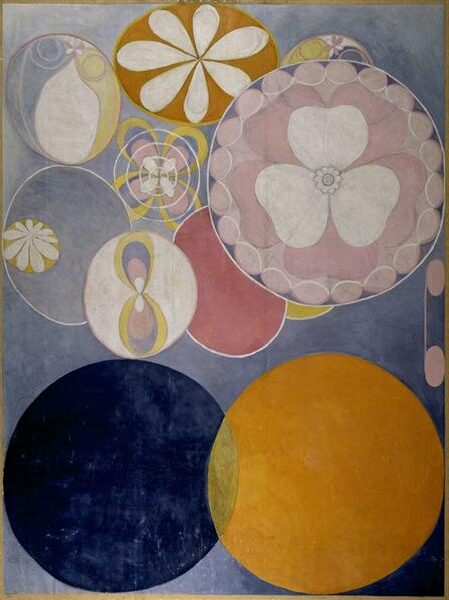

She drew inspiration from botanical studies and the work of scientists like Linnaeus.
Her fascination with the natural world is evident in how she integrates symbols and forms that reflect growth and transformation.
While she embraced abstraction, her work often references the beauty and complexity of nature.
This connection to science and nature allows her paintings to engage with ideas beyond the visual realm, representing her belief in the interconnectedness of life and the universe. Through her work, af Klint invites viewers to explore these concepts along with her.
The Significance of ‘The Paintings for the Temple’
The Paintings for the Temple forms a key part of Hilma af Klint’s artistic legacy. This series consists of 193 works, showcasing her early foray into abstract art.
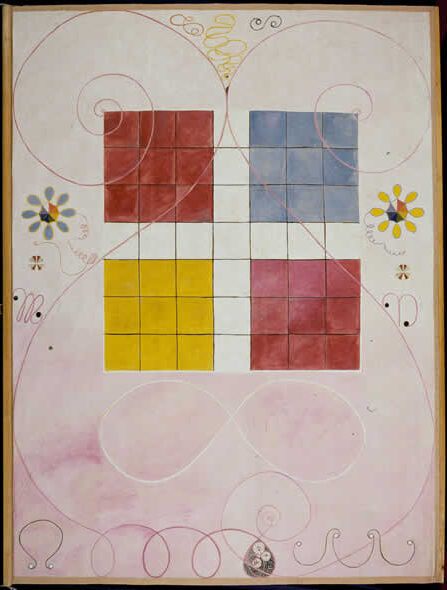

Created between 1906 and 1915, the series reflects af Klint’s spiritual beliefs and her interest in the unseen dimensions of reality.
One notable group within the series is The Ten Largest. These paintings explore themes related to the Human Life Cycle. Each piece vividly illustrates various stages of life, from childhood to adulthood. The use of bold colors and abstract forms is central to af Klint’s vision.
In works like What a Human Being Is, she delves into the complexity of human existence. This painting attempts to represent broader spiritual questions about human nature.
Svanen (The Swan) and Tree of Knowledge are more examples from the series. These pieces employ symbolic imagery, with the swan symbolizing transformation and purity, while the Tree of Knowledge depicts the pursuit of wisdom and enlightenment.
Af Klint designed these paintings to be displayed in a spiral temple. This setting was meant to guide viewers on a journey through her spiritual insights. Her use of vibrant colors and geometric shapes highlights her innovative approach to art.
These works were not intended for public viewing during af Klint’s lifetime. Despite this, her vision laid a foundation for future abstract artists. Her unique approach inspires ongoing discussions about the intersection of art and spirituality.
Hilma af Klint’s Impact on Art Movements and Exhibitions
Hilma af Klint was a pioneer in abstract painting, influencing numerous artists and art movements long after her lifetime. Her work gained recognition through exhibitions worldwide, drawing large audiences and reshaping views on modern art.

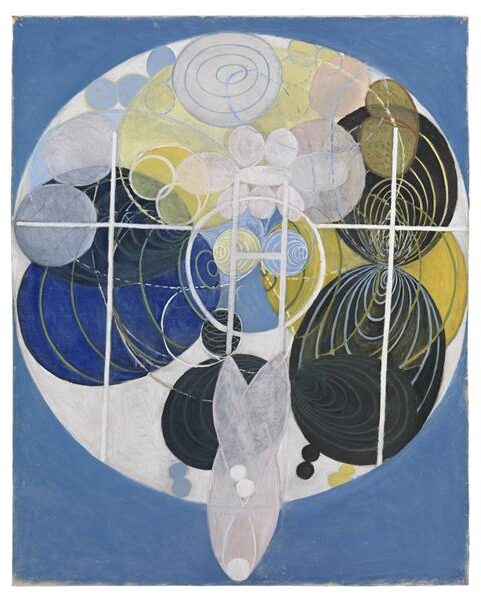
Af Klint’s Role in the Abstract Art Movement
Hilma af Klint is often credited with creating abstract art before many well-known artists of her time. She started painting abstract pieces in the early 20th century, ahead of artists like Kandinsky and Mondrian.
Her work did not follow traditional art rules, using bold colors and geometric shapes to explore themes such as spirituality and nature.
Her paintings broke away from representation, which helped inspire the Expressionism and Abstract Art movements. She explored spiritual symbolism and unseen worlds, themes that resonated with artists who later emerged in the art scene.
Although her work was largely unknown during her lifetime, Af Klint’s approach has been recognized as a significant force in reshaping art into a language of emotions and abstract forms.
Posthumous Exhibitions and Collections
After her death, Hilma af Klint’s art gained attention, leading to major exhibitions that highlighted her innovative work.
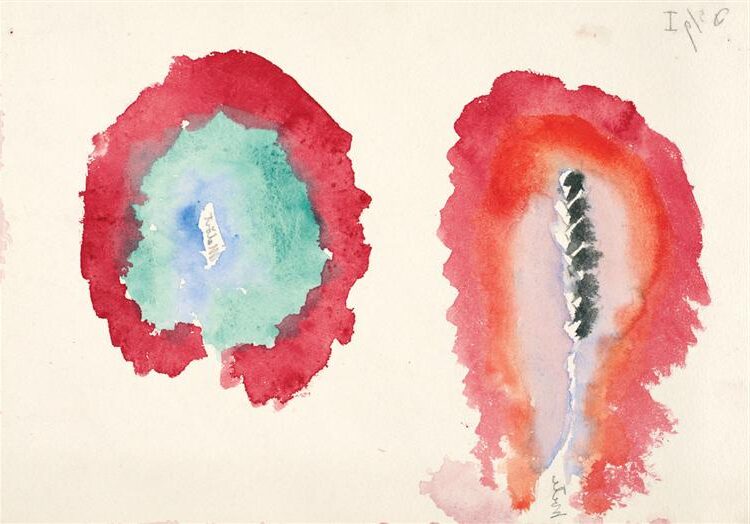
Wheat and Wormwood (1922) by Hilma af Klint
The Guggenheim’s “Hilma af Klint: Paintings for the Future” became the most-visited show in the museum’s history, drawing over 600,000 visitors. This exhibition showcased her unique style and introduced her to a broader audience.
Her paintings are now part of collections worldwide, including Sweden’s Moderna Museet in Stockholm.
These exhibitions bring to light her influence on modern art and ensure her position as a key Swedish artist who contributed significantly to abstract movements. Her work, once hidden, is now celebrated and studied for its groundbreaking approach and lasting impact.
Frequently Asked Questions
Hilma af Klint was a pioneer of abstract art. Her work is often associated with spiritual themes and symbolism. Though her paintings were not publicly known until after her death, they now hold a significant place in the art world.
What is the significance of Hilma af Klint’s artistic work?
Hilma af Klint’s art marked a shift toward abstraction, even before many of her peers. Her pieces, often large and filled with symbolism, highlight her unique approach to creativity and spirituality. Her role as a female abstract pioneer is now recognized and celebrated worldwide.
Where can I view Hilma af Klint’s paintings in a current exhibition?
Hilma af Klint’s paintings are displayed in various exhibitions globally, often organized by the Hilma af Klint Foundation. Art enthusiasts can check scheduled showcases at major art museums and galleries for opportunities to view her work firsthand.
How has Hilma af Klint’s approach to spirituality influenced her artwork?
Af Klint believed that her paintings were influenced by spiritual forces. She described painting as a way to connect with higher consciousness and said her work was often guided by spirits.
This spiritual connection deeply influenced the themes and symbolism found in her art.
Are there any notable similarities or differences between Hilma af Klint’s and Piet Mondrian’s abstract styles?
Both Hilma af Klint and Piet Mondrian played significant roles in the development of abstract art. While Mondrian focused more on geometry and primary colors, af Klint’s work included organic forms and vibrant colors, often inspired by symbolic and spiritual themes.
What is the role of symbolism in Hilma af Klint’s series, particularly ‘The Swan’?
In the series ‘The Swan,’ af Klint used symbolism to explore dualities and transformation themes. Each painting in the series reflects contrasts, such as light and dark or male and female. These symbols convey the spiritual and metaphysical ideas central to her work.
How did Hilma af Klint’s personal life and relationships affect her art?
Hilma af Klint’s personal life and relationships greatly influenced her art. Her involvement with spiritualist groups, for instance, provided the support and inspiration necessary for her to pursue her distinct artistic path, blending art with spirituality.


